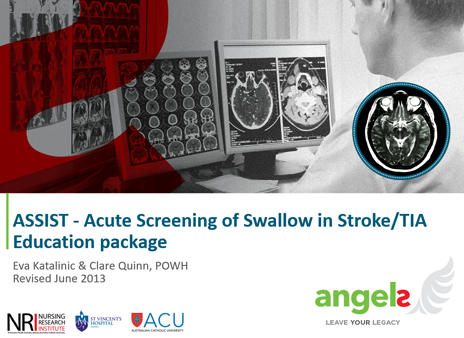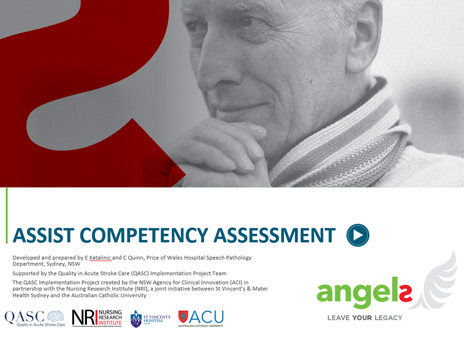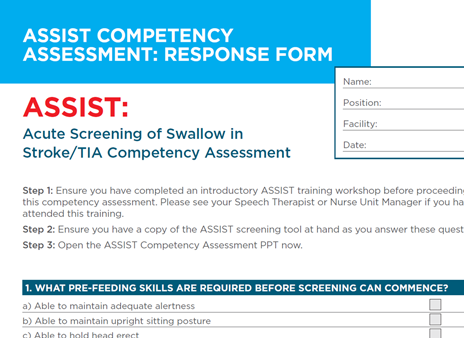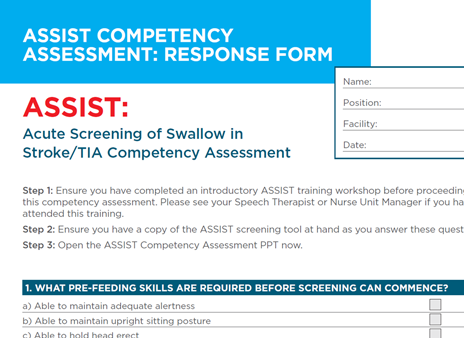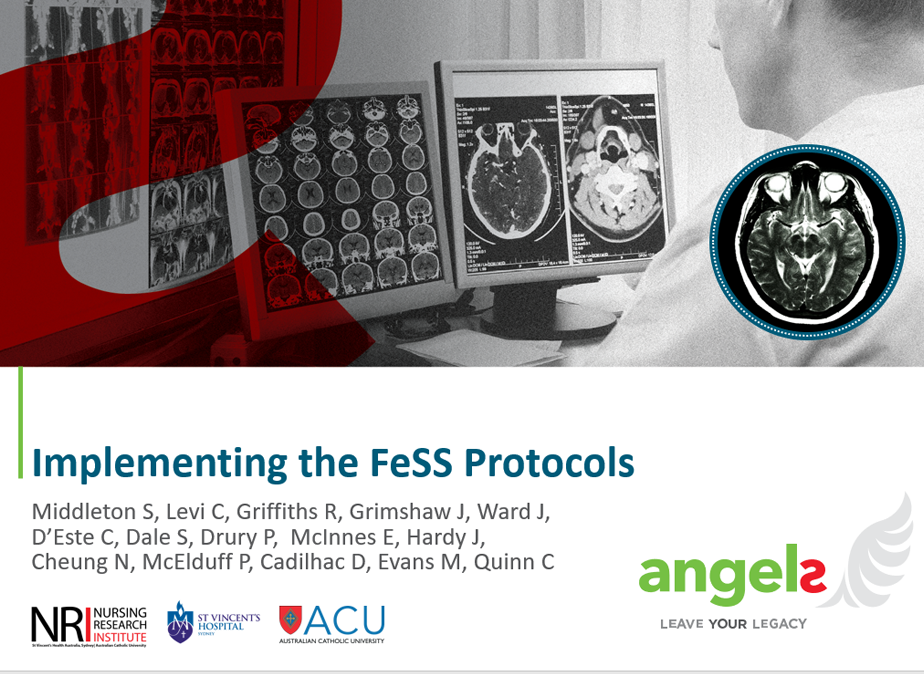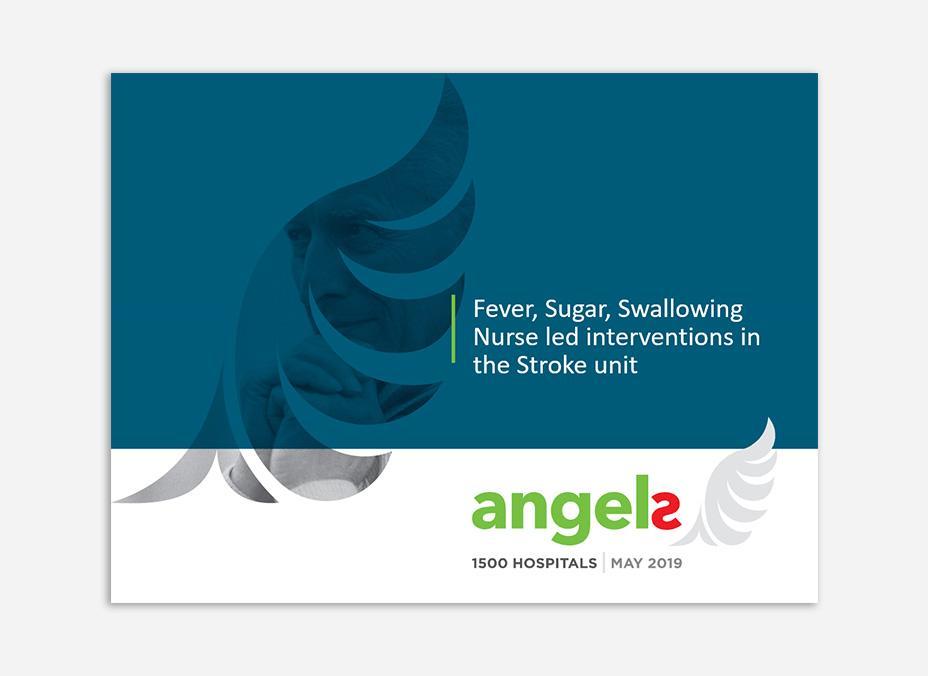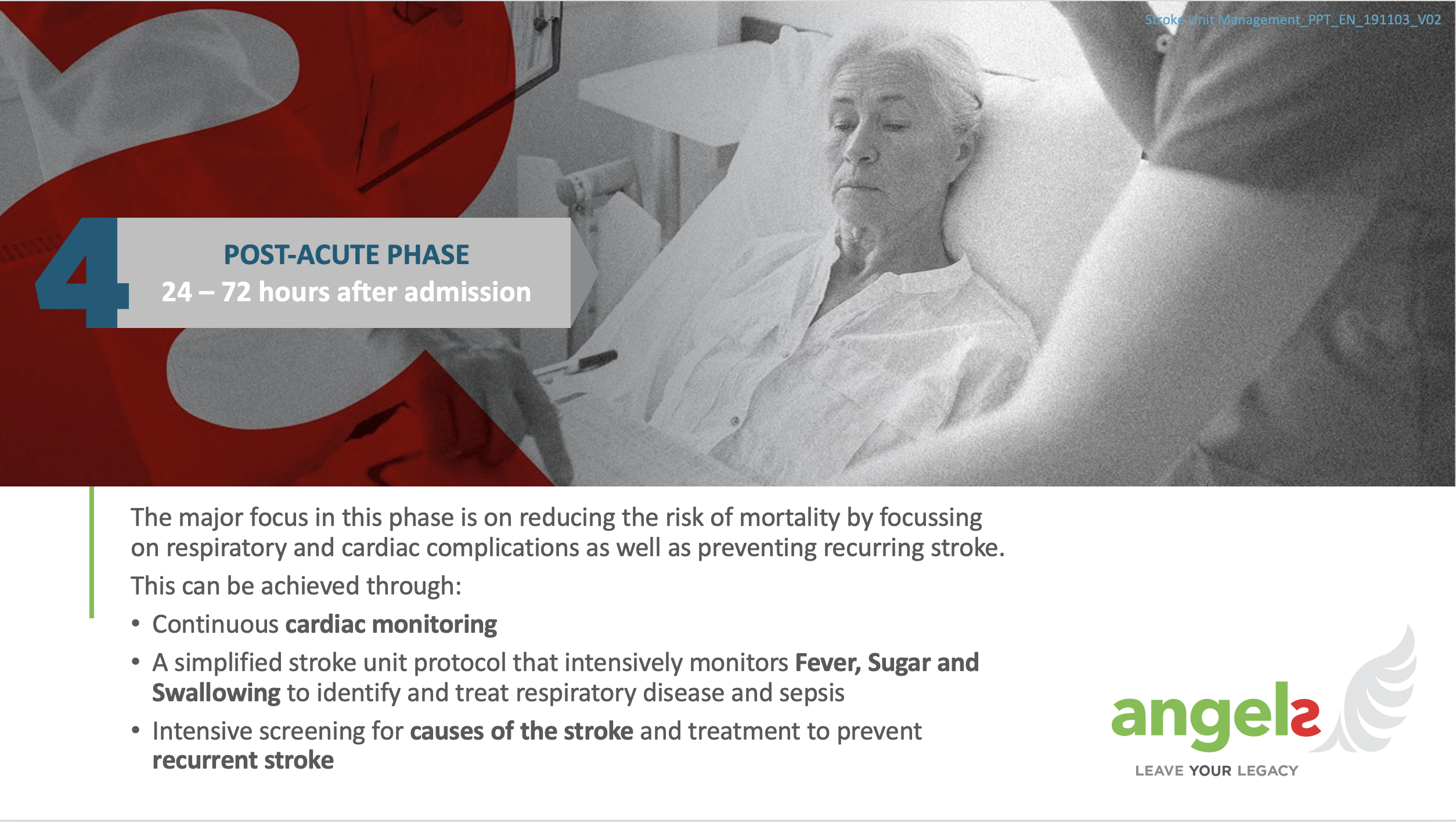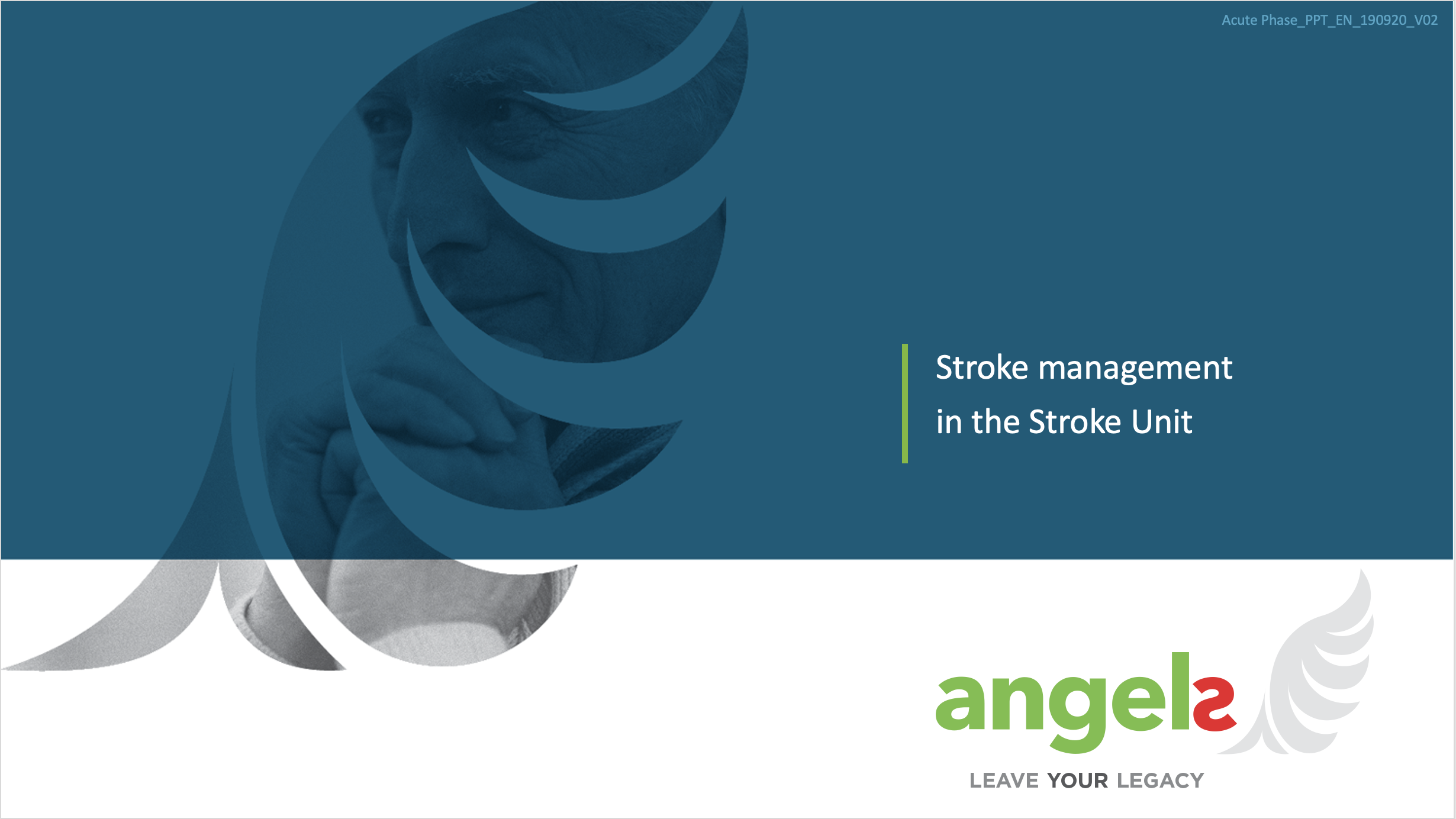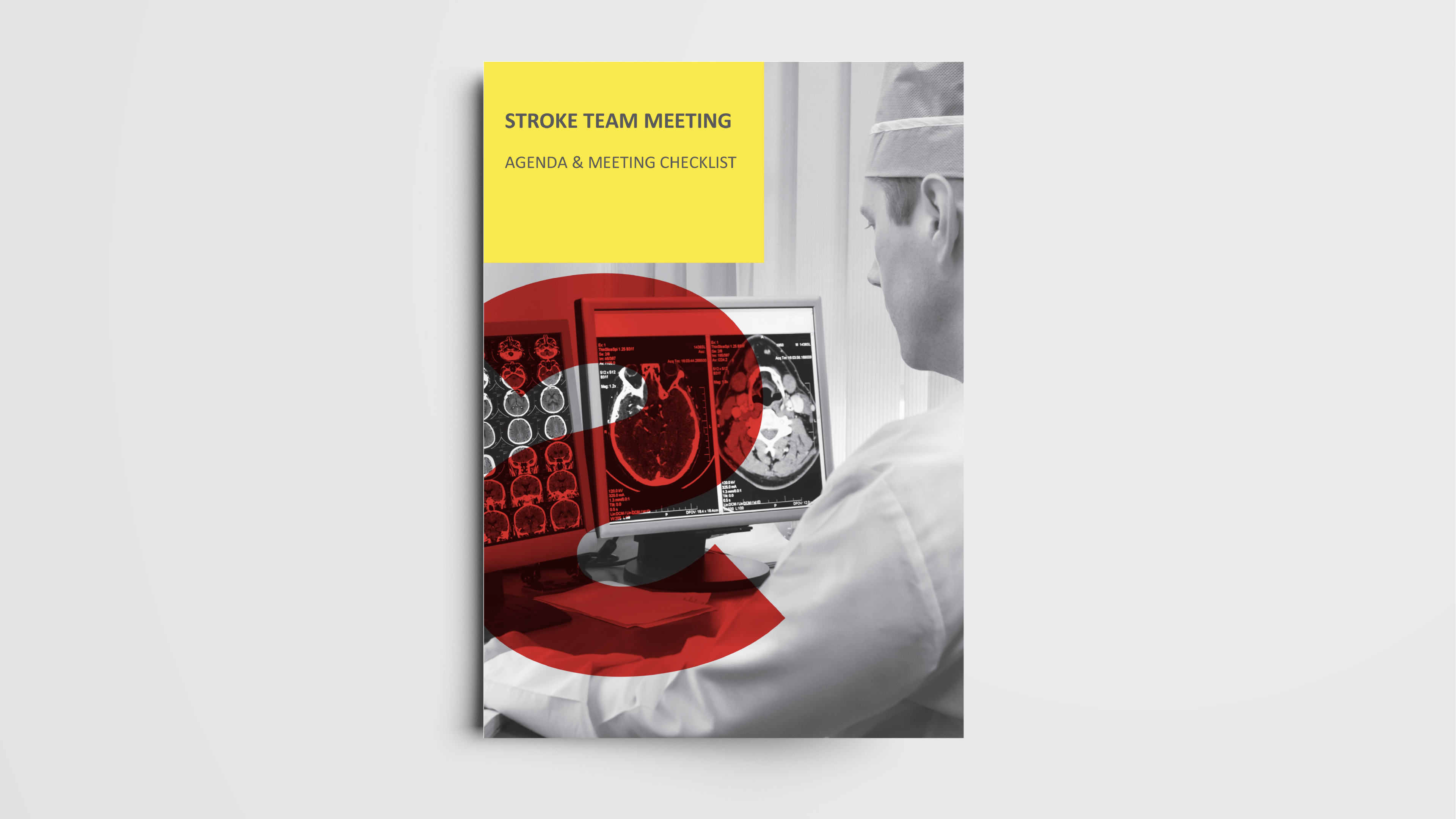Risorse della fase post-acuta
Per ridurre la mortalità per ictus, l’attenzione nella fase post-acuta (1-72 ore dopo il trattamento) deve essere posta sulla prevenzione delle seguenti cause di decesso più comuni: decesso cardiaco (incluso infarto miocardico [IM] fatale, aritmia fatale e insufficienza cardiaca congestizia), polmonite, ictus ricorrente, sepsi e altre.
L’obiettivo della fase post-acuta è migliorare la qualità e la coerenza degli interventi post-ictus e il monitoraggio utilizzando le liste di controllo post-ictus e FeSS.
Checklists
-
 LISTA DI CONTROLLO PER LA DIMISSIONE
LISTA DI CONTROLLO PER LA DIMISSIONELa lista di controllo per la dimissione può essere utilizzata per garantire la standardizzazione delle valutazioni post-ictus e per assicurare che la dimissione del paziente avvenga nel rispetto delle raccomandazioni contenute nelle linee guida.
Formazione sulla disfagia
DEGLUTIRE IN CASO DI ICTUS/ATTACCO ISCHEMICO TRANSITORIO
È stato dimostrato che gli interventi condotti dagli infermieri per gestire la febbre, l’iperglicemia e le difficoltà di deglutizione hanno significativamente ridotto i tassi di decesso e dipendenza dopo l’ictus. Utilizza le seguenti risorse per migliorare e valutare le tue conoscenze.
PROTOCOLLI DI SCREENING E VALUTAZIONE DELLA DISFAGIA
Guida pratica per gli operatori sanitari sul posizionamento del tubo di alimentazione per i pazienti con ictus.
Stroke unit
Per ridurre la mortalità per ictus, l’attenzione nella fase post-acuta (1-72 ore dopo il trattamento) deve essere posta sulla prevenzione delle seguenti cause di decesso più comuni: decesso cardiaco (incluso infarto miocardico [IM] fatale, aritmia fatale e insufficienza cardiaca congestizia), polmonite, ictus ricorrente, sepsi e altre.
L’obiettivo della fase post-acuta è migliorare la qualità e la coerenza delle indagini post-ictus e il monitoraggio utilizzando le liste di controllo post-ictus e FeSS.
FEBBRE, ZUCCHERO E DEGLUTIZIONE (FESS)
Scopri l’importanza di eseguire lo screening per febbre, zucchero e deglutizione durante le prime 72 ore e il modo migliore per applicare il protocollo FeSS.
terapia per ictus
Scopri come organizzare la catena di fornitura dell’assistenza ai pazienti colpiti da ictus e come fondare una stroke unit
PROGRAMMA DELLA RIUNIONE DEL TEAM PER L’ICTUS
Questo programma funge da base per la riunione settimanale del team per l’ictus multidisciplinare che dovrebbe svolgersi in ogni ospedale. Lo scopo è presentare brevemente ogni paziente che viene assistito in ospedale al momento della riunione. Ogni caso deve essere valutato dal punto di vista delle deviazioni dal protocollo, dei parametri di qualità della cura dell’ictus e della pianificazione della cura del paziente. Seguire questi passaggi in modo coerente potrebbe servire a standardizzare l’assistenza e infondere una mentalità di miglioramento continuo della qualità. Le “cose da fare” derivanti da questa riunione possono essere acquisite nella sezione Elementi di azione di questo ordine del giorno.
Il PROGETTO FRECCIA
Il progetto Arrow standardizza la cura post-acuta dell’ictus tramite un sistema di frecce codificate a colori che vengono posizionate sopra il letto di ciascun paziente per aiutare medici, infermieri e persino portatori a identificare facilmente il tipo di ictus e il lato interessato. Tutti i dettagli dei protocolli di trattamento per ogni giorno sono comunicati tramite tabelle, come controlli regolari per disfagia, glicemia e febbre. Il primo indizio visivo è il colore della freccia: rosso per l’ictus emorragico, giallo per l’ictus ischemico e verde per l’emorragia subaracnoidea. Il secondo indizio è la direzione della freccia. Ciò indica il lato interessato, quindi anche i membri del personale che sono appena entrati in servizio sapranno istantaneamente su quale lato posizionare il bracciale per la pressione sanguigna e la linea endovenosa, dove collegare il pulsossimetro per misurare i livelli di ossigeno nel sangue, come approcciare la mobilizzazione del paziente e quale lato è ottimale per i pazienti le cui capacità comunicative sono compromesse.
Risorse
-
 RENDERE SEMPRE PIÙ COMPETENTI GLI INFERMIERI DI PAZIENTI COLPITI DA ICTUS
RENDERE SEMPRE PIÙ COMPETENTI GLI INFERMIERI DI PAZIENTI COLPITI DA ICTUSEstela Sanjuan, Spagna
-
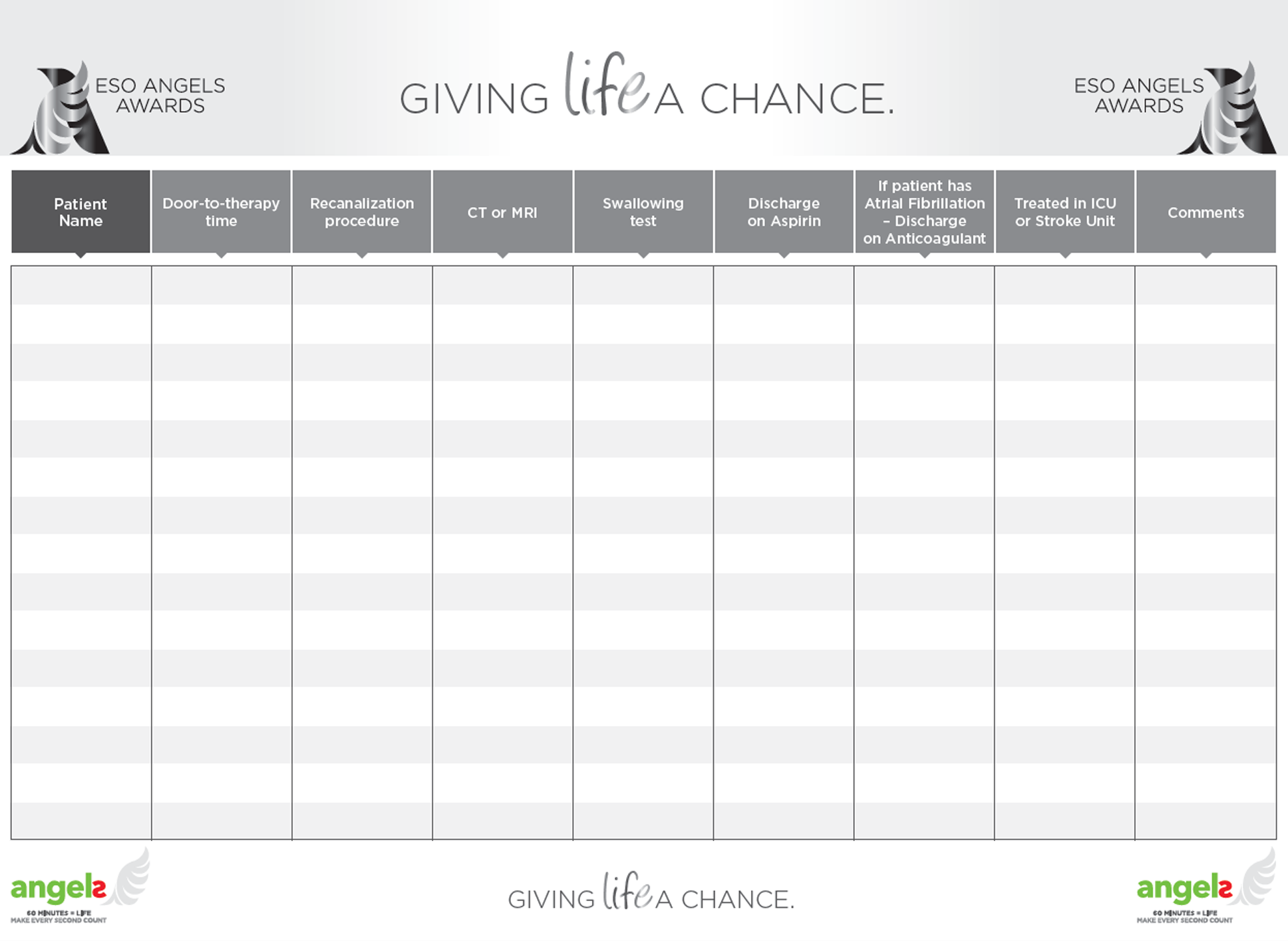 POSTER PER LA STROKE UNIT
POSTER PER LA STROKE UNITQuesto poster può essere utilizzato come riferimento all’interno della stroke unit per garantire il rispetto degli indicatori di qualità fondamentali nel trattamento dell’ictus.


